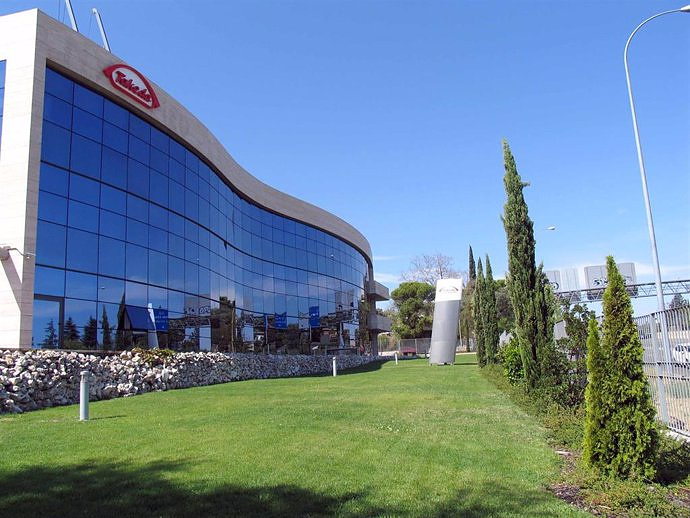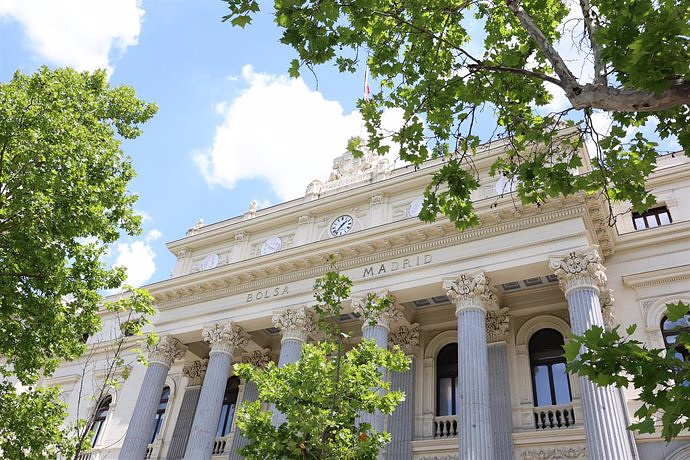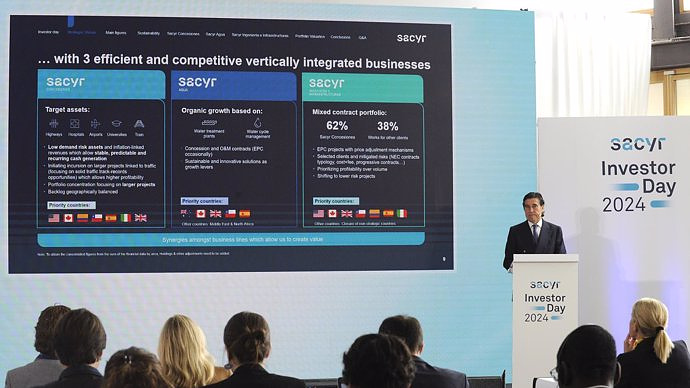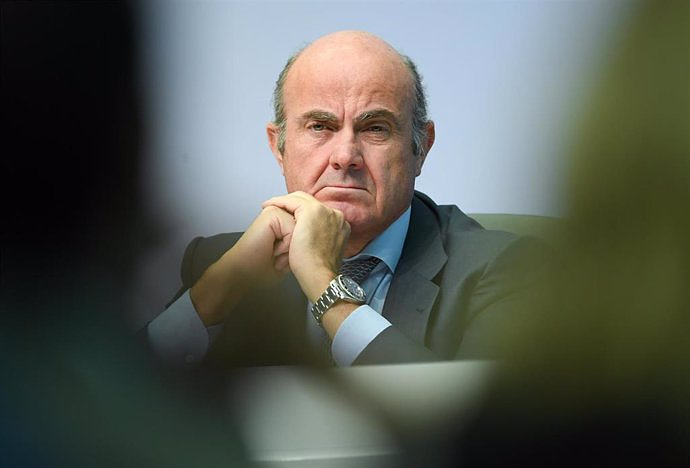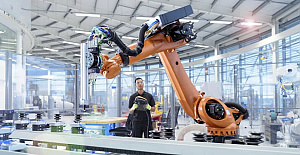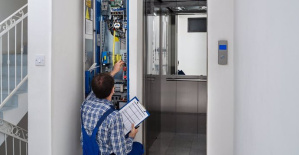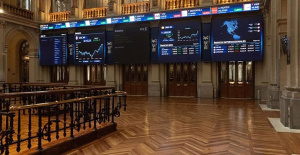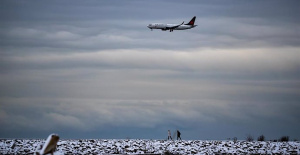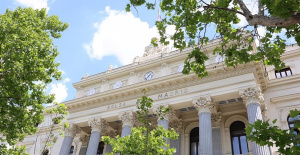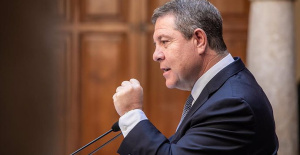BURGOS, 21 Jul. (EUROPA PRESS) -
King Felipe VI, together with the President of the Government, Pedro Sánchez, and that of the Junta de Castilla y León, Alfonso Fernández Mañueco, inaugurated the Burgos high-speed line this Thursday, thirteen years after the start of the works and after the various delays that the project has had to face.
The AVE, a model 112 train, left the Madrid-Chanmartín station at 11:00 a.m. and, after a stop in Valladolid, arrived at the Rosa Manzano station in Burgos at 12:35 p.m.
The connection with the capital of Burgos is made through an 86.5-kilometre-long route, which has the most advanced signaling technology, after an investment of 759 million euros.
The AVE service will reduce travel times between Burgos and Madrid to just over an hour and a half. as well as with Valladolid through the stop contemplated in the itinerary, and increases the reliability in the routes with the north of Spain.
The High Speed line starts from the existing railway junction at Venta de Baños, within the North-Northeast Corridor, which connects the Valladolid-Palencia-León and Venta de Baños-Burgos-Vitoria-Francia axes. It will carry out the Burgos-Madrid route in a time of one hour and 33 minutes, includes two tunnels and twelve viaducts, one of them, the longest, crosses the Pisuerga river and the A-62 motorway.
One of the anecdotes of the construction of this new high-speed branch line has been the discovery, on the Estepar-Variante Ferroviaria de Burgos section, of the Roman villa of Molino de Arriba, which forms part of the archaeological site at this site, and whose exact location was unknown to date.
With the commissioning of the Burgos line, the High Speed rail network increases its route in the national territory, where it is expected to exceed 4,000 kilometers in length before the end of the year.
This will be possible thanks to an investment in the execution of works in which Adif is working in excess of 11,700 million euros, in which a significant contribution is expected from the Recovery, Regeneration and Resilience Funds of the European Union.
In the future, the High Speed will have a connection with the Basque Country from the capital of Burgos through what is known as 'Y vasca', the wording of which has recently been approved by the Council of Ministers.
It is a branch that will run along a 101.3-kilometre-long route, stopping at Miranda de Ebro, which will involve an investment of close to 1,492 million euros, which will allow the arrival of the AVE to the Basque Country.

 Exploring Cardano: Inner Workings and Advantages of this Cryptocurrency
Exploring Cardano: Inner Workings and Advantages of this Cryptocurrency Seville.- Economy.- Innova.- STSA inaugurates its new painting and sealing hangar in San Pablo, for 18 million
Seville.- Economy.- Innova.- STSA inaugurates its new painting and sealing hangar in San Pablo, for 18 million Innova.- More than 300 volunteers join the Andalucía Compromiso Digital network in one month to facilitate access to ICT
Innova.- More than 300 volunteers join the Andalucía Compromiso Digital network in one month to facilitate access to ICT Innova.-AMP.- Ayesa acquires 51% of Sadiel, which will create new technological engineering products and expand markets
Innova.-AMP.- Ayesa acquires 51% of Sadiel, which will create new technological engineering products and expand markets Student camps will continue in the face of CRUE's "empty promises" and demand a "total break" with Israel
Student camps will continue in the face of CRUE's "empty promises" and demand a "total break" with Israel The Generalitat expresses its "total" opposition to BBVA's takeover of Sabadell
The Generalitat expresses its "total" opposition to BBVA's takeover of Sabadell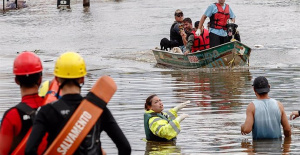 Death toll rises to 107 from floods caused by heavy rains in southern Brazil
Death toll rises to 107 from floods caused by heavy rains in southern Brazil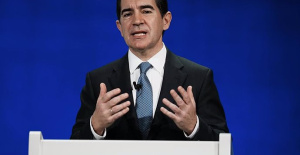 BBVA is willing to assume the possible reputational risk if the takeover bid for Sabadell does not go ahead
BBVA is willing to assume the possible reputational risk if the takeover bid for Sabadell does not go ahead How Blockchain in being used to shape the future
How Blockchain in being used to shape the future Not just BTC and ETH: Here Are Some More Interesting Coins Worth Focusing on
Not just BTC and ETH: Here Are Some More Interesting Coins Worth Focusing on Expociència expects to receive more than 4,000 visitors in the Science Park of the University of Valencia
Expociència expects to receive more than 4,000 visitors in the Science Park of the University of Valencia They develop devices for the precise diagnosis of cancer patients
They develop devices for the precise diagnosis of cancer patients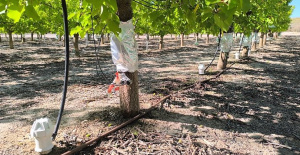 UMH researchers are working on a high-quality apricot crop that requires less irrigation water
UMH researchers are working on a high-quality apricot crop that requires less irrigation water The UPV develops an application to improve the quality of life of patients with glioblastoma
The UPV develops an application to improve the quality of life of patients with glioblastoma A million people demonstrate in France against Macron's pension reform
A million people demonstrate in France against Macron's pension reform Russia launches several missiles against "critical infrastructure" in the city of Zaporizhia
Russia launches several missiles against "critical infrastructure" in the city of Zaporizhia A "procession" remembers the dead of the Calabria shipwreck as bodies continue to wash up on the shore
A "procession" remembers the dead of the Calabria shipwreck as bodies continue to wash up on the shore Prison sentences handed down for three prominent Hong Kong pro-democracy activists
Prison sentences handed down for three prominent Hong Kong pro-democracy activists ETH continues to leave trading platforms, Ethereum balance on exchanges lowest in 3 years
ETH continues to leave trading platforms, Ethereum balance on exchanges lowest in 3 years Investors invest $450 million in Consensys, Ethereum incubator now valued at $7 billion
Investors invest $450 million in Consensys, Ethereum incubator now valued at $7 billion Alchemy Integrates Ethereum L2 Product Starknet to Enhance Web3 Scalability at a Price 100x Lower Than L1 Fees
Alchemy Integrates Ethereum L2 Product Starknet to Enhance Web3 Scalability at a Price 100x Lower Than L1 Fees Mining Report: Bitcoin's Electricity Consumption Declines by 25% in Q1 2022
Mining Report: Bitcoin's Electricity Consumption Declines by 25% in Q1 2022 Oil-to-Bitcoin Mining Firm Crusoe Energy Systems Raised $505 Million
Oil-to-Bitcoin Mining Firm Crusoe Energy Systems Raised $505 Million Microbt reveals the latest Bitcoin mining rigs -- Machines produce up to 126 TH/s with custom 5nm chip design
Microbt reveals the latest Bitcoin mining rigs -- Machines produce up to 126 TH/s with custom 5nm chip design Bitcoin's Mining Difficulty Hits a Lifetime High, With More Than 90% of BTC Supply Issued
Bitcoin's Mining Difficulty Hits a Lifetime High, With More Than 90% of BTC Supply Issued The Biggest Movers are Near, EOS, and RUNE during Friday's Selloff
The Biggest Movers are Near, EOS, and RUNE during Friday's Selloff Global Markets Spooked by a Hawkish Fed and Covid, Stocks and Crypto Gain After Musk Buys Twitter
Global Markets Spooked by a Hawkish Fed and Covid, Stocks and Crypto Gain After Musk Buys Twitter Bitso to offset carbon emissions from the Trading Platform's ERC20, ETH, and BTC Transactions
Bitso to offset carbon emissions from the Trading Platform's ERC20, ETH, and BTC Transactions Draftkings Announces 2022 College Hoops NFT Selection for March Madness
Draftkings Announces 2022 College Hoops NFT Selection for March Madness


